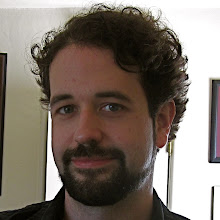Then again, that got me thinking about my own response to concepts in geometry like the Pythagorean Theorem. I was never all that interested in mathematical proofs when I was in school, and I remember being annoyed that my textbook spent so much time proving ideas that were so easy to remember. As long as I could remember the formula and knew when and how to use it, I didn't care to know the gory details for how mathematicians proved such things. In retrospect, it's obvious to me that I didn't understand (heh) the distinction between knowledge and understanding, nor the need to "construct" understanding of deductive theorems.
Constructing inductive understanding was always pretty easy for me to wrap my brain around, perhaps because that's the way science works. It's easy to understand why you have to use speculation, testing and reasoning to come up with a theory for how something generally works when all you have to work with are a few specific data points. Deduction, to me, always felt like working backwards: if you've set your axioms right, there's only one possible conclusion you can reach -- but who's to say whether your axioms are right? Even something as seemingly solid as geometry is ultimately rooted in a fairly arbitrary set of rules; once you change those rules, your whole system of deductive consequences is changed as well. Even more disturbing, there is no one "true" set of geometric rules that applies in all situations; Euclid's system works well for most common circumstances, but when you start getting into the far-flung corners of physics, they're no longer applicable.
I suspect that this lack of congruence between math and reality is part of why I've always found math irritating, even when I was good at it. It always seemed to me that math ought to be "true": that it should remain consistent with reality in all circumstances, without resorting to apparent "cheats" like imaginary numbers and non-Euclidean geometries. (The existence of pi still creeps me out when I think about it too much. I'm surrounded by circles, spheres and cylinders of quite obvious solidity, and yet their areas and volumes can never be precisely known because they are dependent on a number with an infinite number of digits!) The notion that new maths had to be invented in order to describe quantum mechanics is deeply distasteful to me, on a level that I'm not sure I can really explain even today. I suppose I have to look at "ordinary" math the way that I look at Newtonian mechanics: a useful approximation of reality that works for most practical purposes.
My own struggle with truly understanding math is a useful reminder of the struggles faced by my students:
"...experts frequently find it difficult to have empathy for the novice, even when they try. That's why teaching is hard, especially for the expert in the field who is a novice teacher. Expressed positively, we must strive unendingly as educators to be empathetic with the learner's conceptual struggles if we are to succeed." (p. 139)
I'll have to stay aware of the fact that many of the biological principles that I'm teaching these young people will be just as baffling to them as the paradoxes of mathematics are to me.
Hmm ... maybe I should put a giant pi symbol over my desk as a reminder.

No comments:
Post a Comment